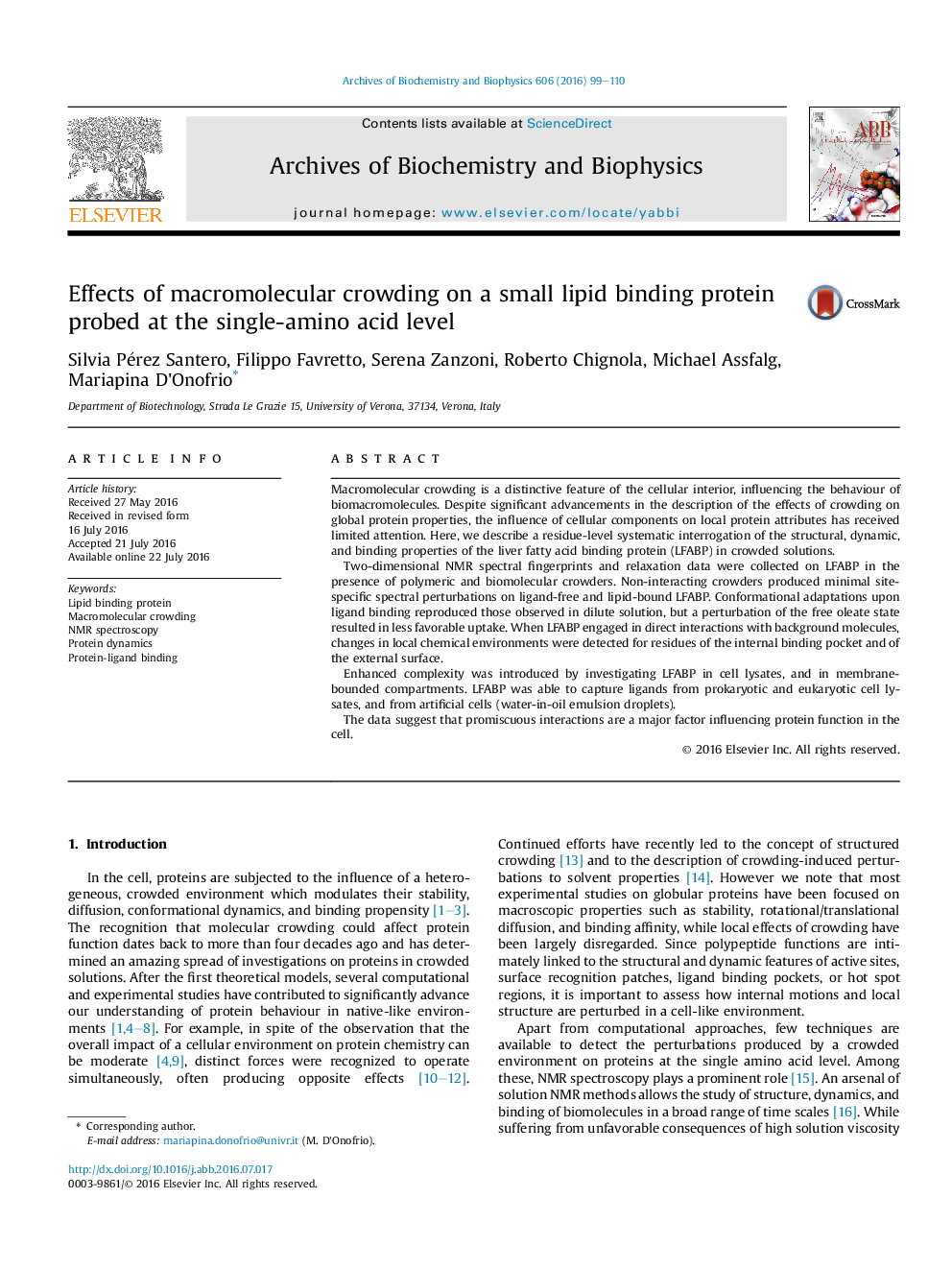| Article ID | Journal | Published Year | Pages | File Type |
|---|---|---|---|---|
| 1924703 | Archives of Biochemistry and Biophysics | 2016 | 12 Pages |
•A small dynamic protein was investigated in cell-mimicking media.•Site-resolved NMR spectroscopy revealed local and global perturbations.•Ligand binding mechanism was little affected by a sucrose polymer.•Lipids present in cell lysates and artificial cells were captured by the protein.•Promiscuous binding likely plays a major role in modulating protein function.
Macromolecular crowding is a distinctive feature of the cellular interior, influencing the behaviour of biomacromolecules. Despite significant advancements in the description of the effects of crowding on global protein properties, the influence of cellular components on local protein attributes has received limited attention. Here, we describe a residue-level systematic interrogation of the structural, dynamic, and binding properties of the liver fatty acid binding protein (LFABP) in crowded solutions.Two-dimensional NMR spectral fingerprints and relaxation data were collected on LFABP in the presence of polymeric and biomolecular crowders. Non-interacting crowders produced minimal site-specific spectral perturbations on ligand-free and lipid-bound LFABP. Conformational adaptations upon ligand binding reproduced those observed in dilute solution, but a perturbation of the free oleate state resulted in less favorable uptake. When LFABP engaged in direct interactions with background molecules, changes in local chemical environments were detected for residues of the internal binding pocket and of the external surface.Enhanced complexity was introduced by investigating LFABP in cell lysates, and in membrane-bounded compartments. LFABP was able to capture ligands from prokaryotic and eukaryotic cell lysates, and from artificial cells (water-in-oil emulsion droplets).The data suggest that promiscuous interactions are a major factor influencing protein function in the cell.
Graphical abstractFigure optionsDownload full-size imageDownload high-quality image (220 K)Download as PowerPoint slide
